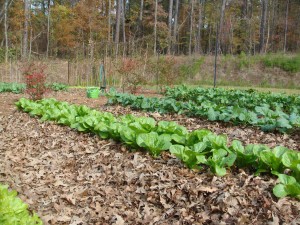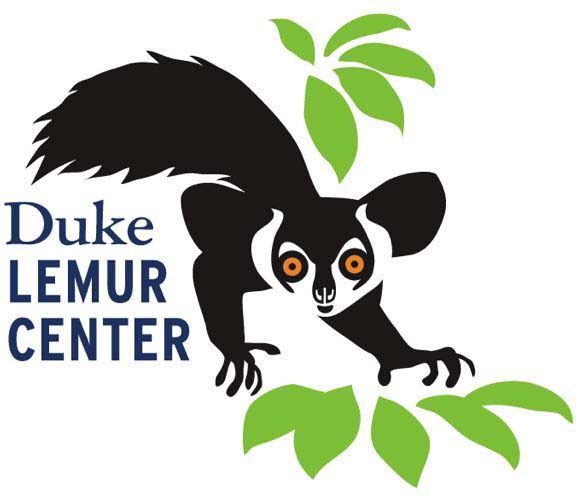November 15, 2013 — Fall brings to mind a palette of yellows, browns and oranges. In the DLC garden, however, fall is the season of cool-weather greens.
Kale, romaine, spinach, collards, chard and a mesclun mix are all part of the November harvest, providing a nutritious supplement to the lemurs’ regular diet.
Greens are not always the lemurs’ preferred item at mealtime. They tend to go for sweet treats like grapes, leaving the vegetables for later. But some of the animals adore leafy greens. Kale, for example, has been a big hit with the sifakas this year.

Cool-weather greens dominate the DLC garden in November. The red bushes in the middle of the picture are blueberry shrubs displaying their fall foliage. Photo by Pat Massard
The DLC garden is “green” in more ways than one. The plants are grown from seed using organic gardening practices. Weeding, watering and harvesting are done by hand. Fruit and vegetable scraps from the DLC kitchen are composted for use in the garden, and leaves are used for mulch. The garden, therefore, is a fairly low-cost and environmentally friendly way to obtain produce.
DLC Conservation Coordinator Charlie Welch oversees the garden, assisted by several enthusiastic volunteers (including me). Being a garden volunteer is fun and satisfying and requires only a modest time commitment (2-4 hours most weeks). Please consider joining us! You can find more information athttps://lemur.duke.edu/volunteers/garden-volunteer/

Pat Massard has an M.S. in Library & Information Studies from Florida State. When she’s not gardening, she works as a staff assistant in the Department of Molecular Genetics and Microbiology at Duke. She has been volunteering at the Duke Lemur Center in a number of capacities since 2011.


